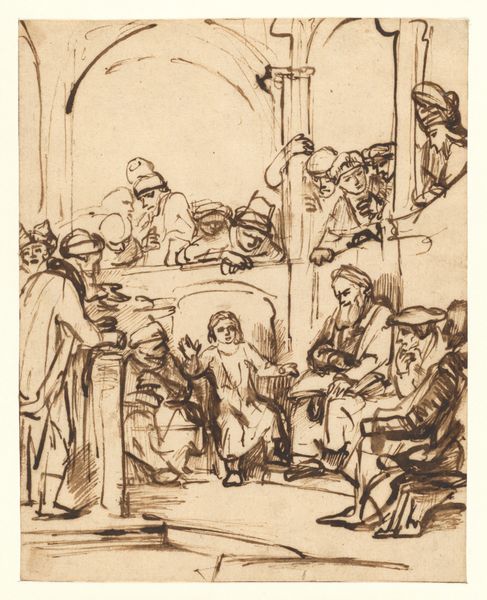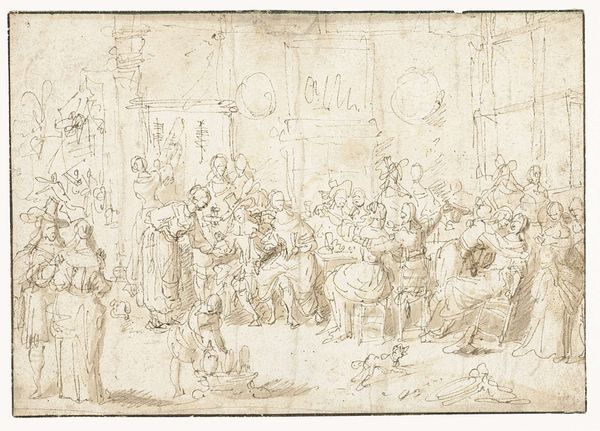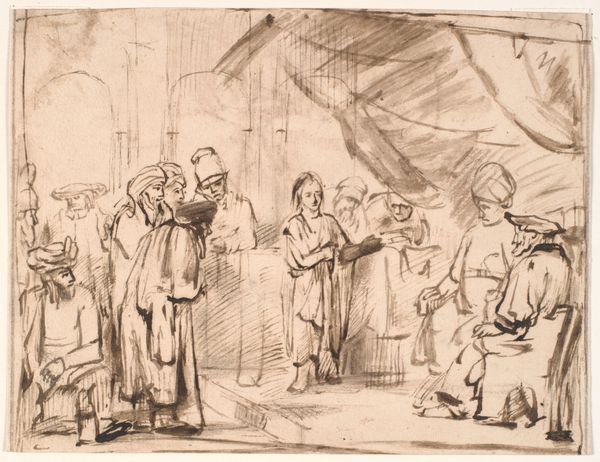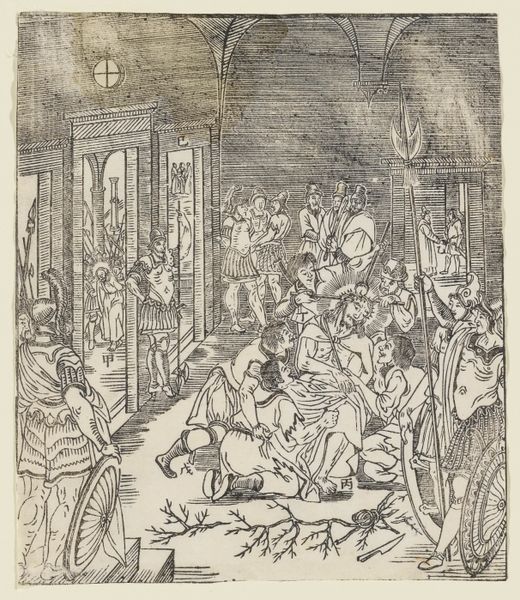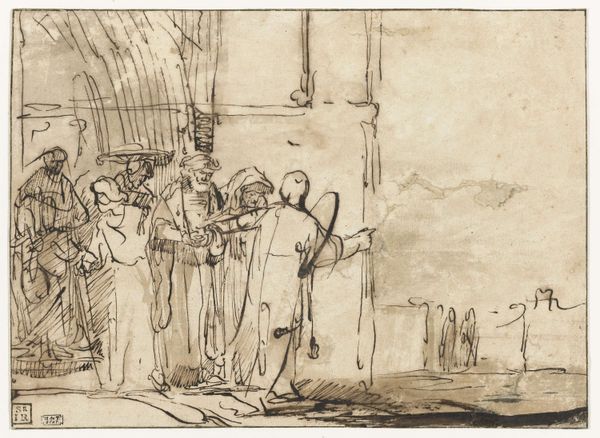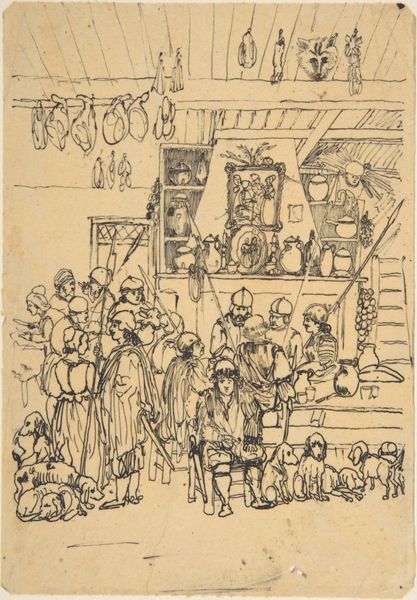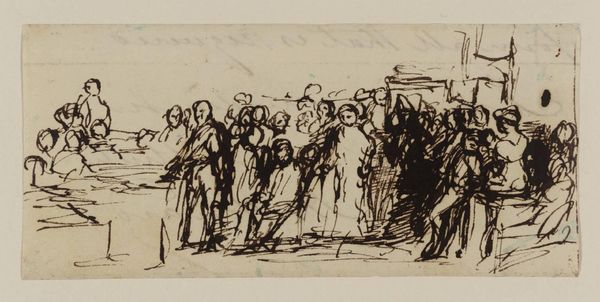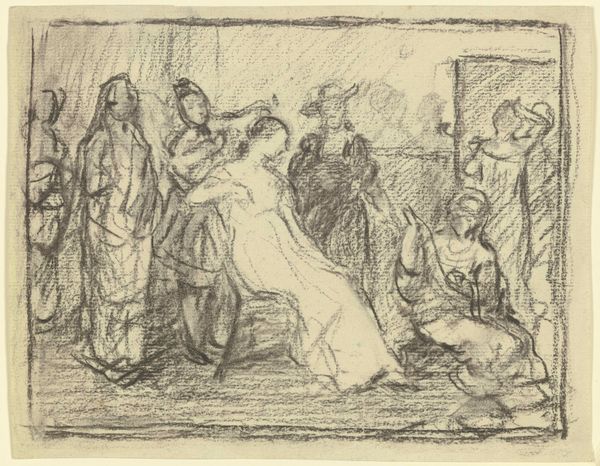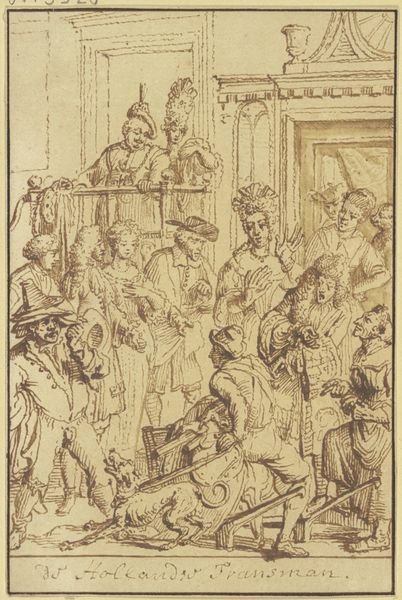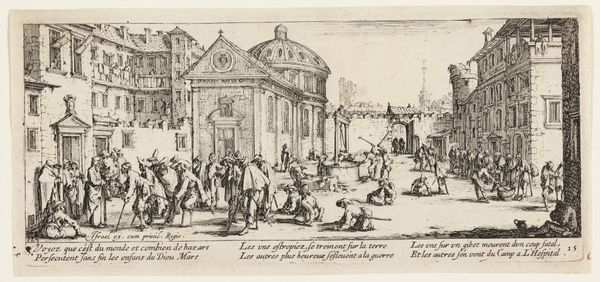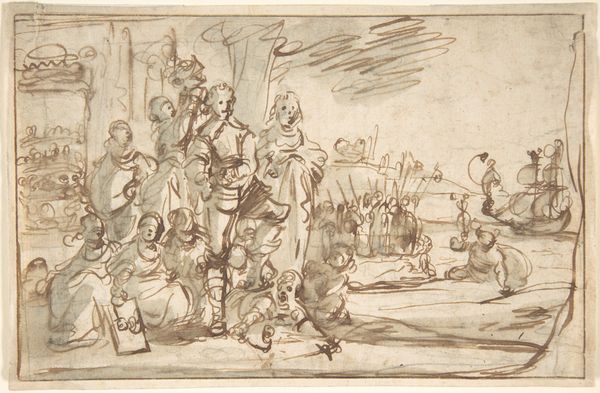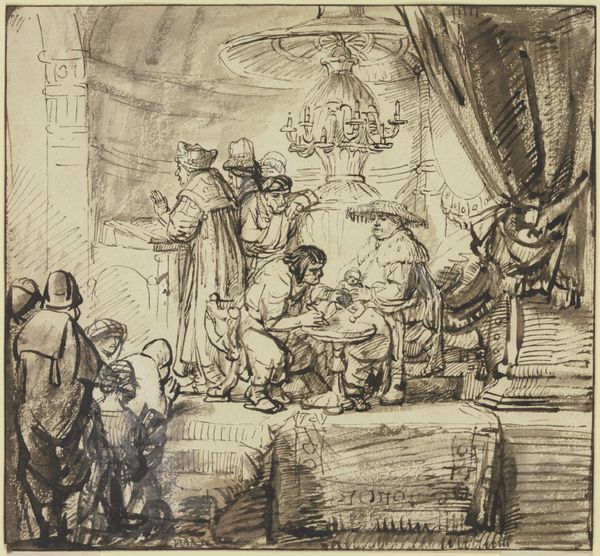
drawing, ink
#
drawing
#
baroque
#
pen drawing
#
figuration
#
ink
#
line
#
history-painting
Dimensions: height 181 mm, width 292 mm
Copyright: Rijks Museum: Open Domain
Curator: Jacob de Wet the Younger created this drawing, "The Raising of Lazarus," sometime between 1650 and 1697. It's rendered in pen and ink. What are your initial thoughts? Editor: It has a kind of raw energy, doesn’t it? All these frantic lines conveying motion and emotion. It feels immediate, like a sketch capturing a fleeting moment. Curator: Indeed. The raising of Lazarus is rich in symbolic weight. Death and resurrection resonate universally. Christ's power over mortality, mirrored in Lazarus's return, suggests the potential for spiritual rebirth within each of us. Editor: Absolutely. And de Wet uses line masterfully here to structure the scene. Notice how the orthogonals converge, creating depth, and guiding our eye towards Lazarus, prone on the ground, as the central figure. Even in the frenzy of the strokes, there’s a very controlled composition. Curator: Lazarus being revived is quite important. Through baptism, an act of immersion, and submersion in water symbolizes a kind of ritualistic death, and in this way, we become reborn. Editor: It also gives narrative and dramatic hierarchy through this organization of the composition. Lazarus’s slumped body acts as a base, anchoring the ascending energy around it. Curator: There is an undercurrent of social commentary, though this element is also spiritual. Lazarus emerges from death and the underworld, only to enter into a socially fraught world where faith and religious tensions often dictated lived experiences. Editor: Interesting, and visually, the starkness of the pen and ink only heightens that tension. The absence of color throws the narrative into sharper relief. It brings the symbolic nature of rebirth to the foreground. Curator: A story endlessly revisited in visual form, always seeking to bring this foundational act of reawakening to present-day sensibilities. Editor: It certainly forces you to engage with the core ideas directly, without any distraction. A deceptively simple presentation of profound complexity.
Comments
No comments
Be the first to comment and join the conversation on the ultimate creative platform.

